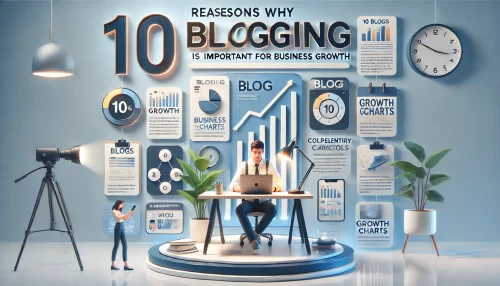In an age where business dynamics are ever-evolving, the collaborative essence of brand partnerships has emerged as a pivotal strategy. These alliances not only allow companies to amplify their reach but also foster innovation and shared growth.
Diving deeper into this concept will reveal its multifaceted nature and significance in today’s corporate landscape.
What are brand partnerships and why are they important?
Brand partnerships, at their core, involve two or more brands collaborating for a shared goal, be it marketing, product development, or other business objectives. Rather than existing in isolation or competing against each other, these brands combine their resources, audiences, and strengths to create something unique and beneficial for both parties.
So, why are these partnerships gaining traction?
- Enhanced Reach and Visibility: By collaborating, brands can tap into each other’s audiences. This cross-pollination means exposure to potential customers who might not have encountered the brand otherwise.
- Shared Resources and Expertise: No brand is perfect. By partnering, brands can leverage each other’s strengths, be it in technology, logistics, creativity, or other areas.
- Risk Mitigation: Launching new products or entering new markets can be risky. With a partner, this risk is shared and often reduced, thanks to combined knowledge.
- Innovative Solutions: Two heads (or more) are better than one. Collaboration can lead to innovative products, services, or marketing campaigns that might not have been possible in isolation.
The rise of collaborative business strategies in today’s market.
Historically, businesses operated in a predominantly competitive landscape, with a ‘survival of the fittest’ mentality. However, as the business ecosystem has matured and globalized, the mantra seems to be shifting towards ‘survival of the most collaborative.’
Several factors have contributed to this shift:
- Globalization and Technology: With the advent of the internet and global supply chains, businesses can no longer operate in silos. Collaboration is not a choice; it’s a necessity to ensure growth in a hyper-connected world.
- Consumer Expectations: Today’s consumers are well-informed and expect more. They crave unique experiences, products, and services. Collaborative efforts often result in such unique value propositions.
- Rising Costs and Complexities: As industries evolve, the costs and complexities of doing business rise. Collaborative strategies can help in sharing these burdens, leading to efficient and cost-effective operations.
- Community and Ecosystem Building: Modern brands are not just selling products; they are building communities. Collaborative efforts can help in creating ecosystems around these communities, further cementing customer loyalty.
Understanding the Core Benefits of Brand Partnerships
When two or more brands come together, the magic they can create is immeasurable. Beyond shared resources and consolidated efforts, brand partnerships unlock a multitude of benefits that transcend traditional marketing methods.
As companies explore this collaborative approach, it’s imperative to discern the pivotal advantages that make brand partnerships a game-changer in today’s market.
Enhancing Audience Reach and Brand Awareness
One of the most immediate and tangible benefits of brand partnerships is the exponential growth in audience reach. Imagine the power of merging two different audience pools, each loyal to their brand. This amalgamation leads to:
- Diverse Exposure: Partnering brands can tap into each other’s followers, subscribers, or clientele, introducing their offerings to a potentially receptive and untapped market.
- Joint Marketing Campaigns: Brands can co-create campaigns that resonate with a wider audience. Such collaborations often gain more traction on social media, creating a buzz and further enhancing visibility.
- Cost-Effective Promotion: Instead of investing individually in promotional activities, brands can pool resources, leading to more impactful marketing at a fraction of the cost.
The culmination of these efforts means heightened brand awareness, allowing both brands to be on the radar of a broader spectrum of consumers.
Leveraging Complementary Strengths for Mutual Growth
Every brand has its strengths and weaknesses. When brands form partnerships, they can harness their respective strengths while mitigating weaknesses. This synergy leads to:
- Innovative Product Offerings: By pooling expertise, brands can co-develop products or services that cater to a wider range of consumer needs.
- Operational Efficiency: If one brand excels in logistics and the other in marketing, they can lean on each other to enhance overall operations.
- Shared Knowledge and Insights: Partner brands can exchange valuable market data and insights, leading to informed decision-making.
The essence of leveraging complementary strengths lies in recognizing that in unity, brands can achieve milestones that might be challenging individually.
Increasing Trust and Credibility in the Market
Trust is the bedrock of brand loyalty. When two reputable brands collaborate, they lend credibility to each other. Here’s how it unfolds:
- Borrowed Reputation: If Brand A is renowned for quality and Brand B for innovation, their partnership can help both brands be perceived as both high-quality and innovative.
- Joint Ventures and Endorsements: When two brands endorse each other’s offerings, it acts as a seal of approval, reinforcing consumer trust.
- Unified Communication: Joint PR efforts or community initiatives can further cement the brands’ positions as responsible and trustworthy entities in the market.
By increasing trust and credibility, brand partnerships not only ensure short-term wins in terms of sales and engagement but also pave the way for long-term loyalty and market leadership.
The Multi-Dimensional Impact of Brand Partnerships
Beyond the immediate benefits of audience expansion and shared resources, brand partnerships are a strategic move with long-term implications.
They impact brands on multiple dimensions, forging paths for sustainable growth, fostering innovation, and positioning brands as leaders in their respective niches.
Catalyzing Market Innovation Through Collaboration
When two minds come together, they often birth ideas that one alone might never have conceived. In the context of brand partnerships:
- Fusion of Expertise: Brands bring different expertise to the table. This fusion can lead to revolutionary product designs, service offerings, or marketing campaigns that set new industry standards.
- Shared R&D Efforts: Collaborative research and development can lead to faster and more efficient innovation cycles, allowing partnered brands to stay ahead of the curve in rapidly evolving industries.
- Adaptation to Market Dynamics: With insights from two brands, there’s a better chance of spotting and adapting to market shifts, ensuring that offerings remain relevant and in demand.
Crafting a Resilient Brand Image
In a world where reputation can make or break a brand, partnerships can serve as a shield, reinforcing and upholding brand image:
- Unified Crisis Management: Should controversies arise, two brands can pool resources and expertise to manage public relations, ensuring damage control and maintaining public trust.
- Shared Corporate Social Responsibility (CSR) Initiatives: Brands can co-create CSR projects, amplifying the positive impact on communities and showcasing their commitment to social welfare.
- Learning from Each Other’s Mistakes: Brands can share experiences, learn from each other’s missteps, and collaboratively strategize to avoid pitfalls.
Building a Robust Community Around Shared Values
The modern consumer is not just buying a product; they’re buying into a set of values. Brand partnerships can:
- Consolidate Brand Values: By collaborating, brands can emphasize shared values, resonating more profoundly with a community that upholds those beliefs.
- Host Joint Community Events: From webinars to workshops, brands can co-host events, fostering a sense of community and engagement among their shared audience.
- Enhanced Loyalty Programs: Joint loyalty or reward programs can offer consumers more value, ensuring they stay committed to both brands for longer periods.
Challenges and Pitfalls of Brand Partnerships
While the myriad benefits of brand partnerships are frequently highlighted, navigating the complex waters of collaboration isn’t without its challenges. As brands intertwine their values, audiences, and strategies, potential pitfalls await, some of which can undermine the very essence of the partnership.
To make informed decisions and forge a fruitful alliance, it’s essential to understand the inherent challenges of brand partnerships and strategies to address them.
Recognizing Potential Conflicts and Brand Misalignment
The initial excitement of collaboration can sometimes overshadow the deeper, potential areas of conflict between partnering brands:
- Mismatched Brand Values: While brands might align on surface-level objectives, deeper discord in company values and principles can strain relations and confuse audiences.
- Differing Target Audiences: A luxury brand partnering with an affordable brand might seem innovative, but such collaborations can dilute brand perception if not executed with clarity.
- Varied Business Objectives: One brand might prioritize revenue generation, while the other might prioritize brand awareness. Recognizing and aligning these objectives is crucial to avoid future conflicts.
To safeguard against these challenges, brands should undertake comprehensive due diligence before formalizing any partnership, ensuring alignment on both superficial and core aspects.
Ensuring Consistent and Cohesive Brand Messaging
Clear communication is the linchpin of any successful partnership. For brand collaborations, this becomes even more crucial:
- Shared Brand Voice: If one brand is casual and quirky in its messaging while the other is formal and professional, there’s a risk of sending mixed signals to the audience.
- Unified Marketing Campaigns: Separate marketing initiatives can often clash or overshadow each other, diluting the impact of the partnership.
- Coordinated Public Relations: A lack of coordination in PR releases or event announcements can confuse media and the target audience.
To ensure a consistent brand message, brands should develop a joint communication strategy, detailing the tone, medium, and frequency of their shared messages.
Mitigating Risks and Handling Disagreements
Even the most harmonious partnerships are not immune to disagreements or external risks:
- Legal Implications: Without a clear contractual agreement, brands can face legal challenges, especially when there are disputes about revenue sharing, intellectual property, or other collaboration terms.
- Reputation Risks: If one brand faces a controversy, it can inadvertently affect the reputation of its partner, especially if the partnership is highly publicized.
- Conflict Resolution: Disagreements over strategy, execution, or even mundane operational details can escalate if not addressed proactively.
Brands can mitigate these risks by having a clear memorandum of understanding, setting up conflict resolution mechanisms, and maintaining open communication lines. Regular review meetings can help anticipate issues and address them before they escalate.
Maximizing the Impact of Brand Partnerships
While the concept of brand partnerships has evolved as a modern mantra for business expansion and collaboration, its success is contingent upon meticulous planning and execution. Like any strategic venture, there are best practices to harness its full potential.
From the outset to the maturity phase of the collaboration, understanding how to maximize impact ensures that brand partnerships transcend beyond mere logos side by side, evolving into a dynamic alliance that resonates with audiences and delivers measurable results.
Strategies for Effective Co-Branding and Co-Marketing
Effective co-branding and co-marketing require a harmonized vision and shared goals:
- Shared Brand Storytelling: Creating a narrative that intertwines the stories of both brands can resonate deeply with audiences, giving a context for the collaboration.
- Unified Visual Aesthetics: Ensuring that marketing materials, whether digital or print, reflect the ethos of both brands without overshadowing one another is paramount.
- Leveraging Strengths and Audiences: By cross-promoting on each other’s platforms, both brands can capitalize on the established trust each brand has with its audience.
- Event Collaborations: Hosting joint webinars, workshops, or product launches can generate buzz and showcase the partnership in action.
- Exclusive Offers: Limited-time deals or products that merge the specialties of both brands can create anticipation and drive sales.
Integrating Partnership Efforts into Your Overall Marketing Strategy
Rather than treating brand partnerships as a separate entity, seamlessly integrating it into the broader marketing strategy ensures continuity and effectiveness:
- Consistent Messaging Across Platforms: Whether it’s on social media, newsletters, or billboards, the partnership message should be in harmony with the brand’s ongoing campaigns.
- Coordinated Launches: Timing product launches or campaigns to coincide with other significant brand events can amplify impact.
- Feedback Integration: Using feedback from partnership campaigns to refine broader marketing efforts can lead to more resonant messaging.
- Budget Allocation: Ensure that there’s a dedicated budget for partnership efforts, ensuring that neither brand feels short-changed in the collaboration.
Monitoring, Analyzing, and Refining the Partnership Over Time
A successful partnership is not static. It requires ongoing attention, analysis, and recalibration:
- Regular Performance Reviews: Setting benchmarks and regularly reviewing performance against these ensures the partnership remains on track.
- Feedback Loops: Create mechanisms to gather feedback from both internal teams and external audiences. This feedback can offer invaluable insights into areas of improvement.
- Flexibility in Execution: While strategies might be set, being agile in execution, especially in response to market changes or feedback, can make all the difference.
- Exit Strategy: Every partnership should have a clear understanding of the conditions under which the collaboration might end, ensuring a smooth transition for both parties.
Looking to the Future: The Evolution of Brand Partnerships
As we gaze into the horizon of brand collaboration, the dynamics of brand partnerships are poised for transformation. Triggered by evolving consumer expectations, technological advancements, and the shifting sands of the global marketplace, brand alliances are no longer just about boosting sales or broadening reach.
The future beckons partnerships that stand on the pillars of innovation, social responsibility, and foresight. Let’s delve into the evolving nuances of brand collaborations and how they’re set to redefine business ecosystems.
How Technology is Reshaping the Way Brands Collaborate
The digital age has ushered in a new era for brand partnerships:
- AI and Data Analytics: Brands can now leverage AI-driven insights to identify potential partners, gauge partnership viability, and tailor collaborative campaigns for maximum resonance with target demographics.
- Virtual Reality (VR) and Augmented Reality (AR): These technologies offer immersive experiences, allowing partnered brands to showcase joint offerings in innovative ways, be it virtual store tours or augmented product demos.
- Blockchain: This decentralized ledger system provides transparency in collaborations, ensuring clear tracking of revenue splits, product authenticity, and joint supply chain management.
- Social Media Integration: Platforms like Instagram and TikTok are facilitating seamless brand collaborations, with features that allow joint advertising, shared stories, and co-branded filters.
Sustainability and Social Responsibility in Brand Partnerships
The modern consumer is discerning, prioritizing brands that reflect their values:
- Eco-Friendly Collaborations: Brands are joining hands to launch sustainable product lines, using recycled materials or processes that have a minimal carbon footprint.
- Community Initiatives: Partnered brands are increasingly initiating community projects, whether it’s reforestation, educational programs, or local craft promotions.
- Transparency and Accountability: Collaborations are emphasizing transparent sourcing, fair trade practices, and ethical labor standards, appealing to the socially conscious consumer.
- Joint CSR Efforts: By pooling resources, brands can amplify their CSR initiatives, achieving more significant impact and broadening their reach.
Preparing Your Brand for the Next Wave of Partnership Opportunities
To stay ahead in the evolving landscape of brand partnerships, foresight and preparation are key:
- Invest in Research & Development: Stay abreast of emerging trends and technologies, ensuring your brand is always ready to leverage the latest in collaborative tools and strategies.
- Build a Flexible Brand Identity: While having a strong brand voice is essential, ensuring some flexibility can help in aligning with future partners without losing core values.
- Diversify Partnership Horizons: Look beyond traditional industries. A tech brand might find synergy with a fashion label, or a food brand might collaborate with a fitness startup.
- Engage in Continuous Learning: Encourage teams to attend workshops, webinars, and courses that focus on the future of brand collaborations.
Conclusion: The Power of Partnership in Business Growth
In an ever-evolving business landscape, one constant remains: collaboration breeds innovation. The adage “two heads are better than one” encapsulates the heart of brand partnerships. By combining resources, expertise, and vision, brands can accelerate their journey towards growth, sustainability, and market dominance.
But as we conclude our exploration of the world of brand alliances, it’s essential to revisit the core tenets that make these partnerships successful and look at the roadmap for nurturing these valuable relationships over time.
Reiterating the Importance of Brand Alliances
Brand partnerships are not merely a trendy business strategy; they are a testament to the power of collaboration:
- Shared Resources & Expertise: Collaborative endeavors allow brands to pool resources, reducing costs while benefiting from the unique strengths of each partner.
- Expanding Market Reach: When brands align, they tap into each other’s customer bases, reaching audiences that might otherwise remain inaccessible.
- Innovation Boost: The confluence of ideas from two or more brands often leads to novel solutions, products, and services that stand out in the market.
- Risk Distribution: In uncertain ventures, having a partner means risks are shared, making bold moves more palatable.
- Enhanced Brand Equity: Associating with reputable partners can bolster a brand’s image, making it more trustworthy and credible in consumers’ eyes.
Tips for Maintaining Long-Term and Fruitful Brand Relationships
Nurturing a brand partnership is akin to tending to a garden; it requires attention, care, and mutual respect:
- Open Communication: Maintain transparent channels of communication. Regular check-ins and feedback sessions ensure both parties are aligned in their objectives and expectations.
- Shared Vision & Goals: Establish clear, mutual objectives from the outset. A partnership is more likely to succeed when both brands are working towards a common goal.
- Flexibility: The business landscape is dynamic. Being adaptable and open to recalibrating strategies based on market feedback or changes can keep the partnership relevant.
- Conflict Resolution: Disagreements are natural, but it’s how they’re resolved that determines the partnership’s longevity. Approach conflicts with an open mind, focusing on mutual benefits.
- Celebrate Milestones: Recognize and celebrate the successes achieved through the partnership. This not only boosts morale but also reinforces the value of the alliance.






